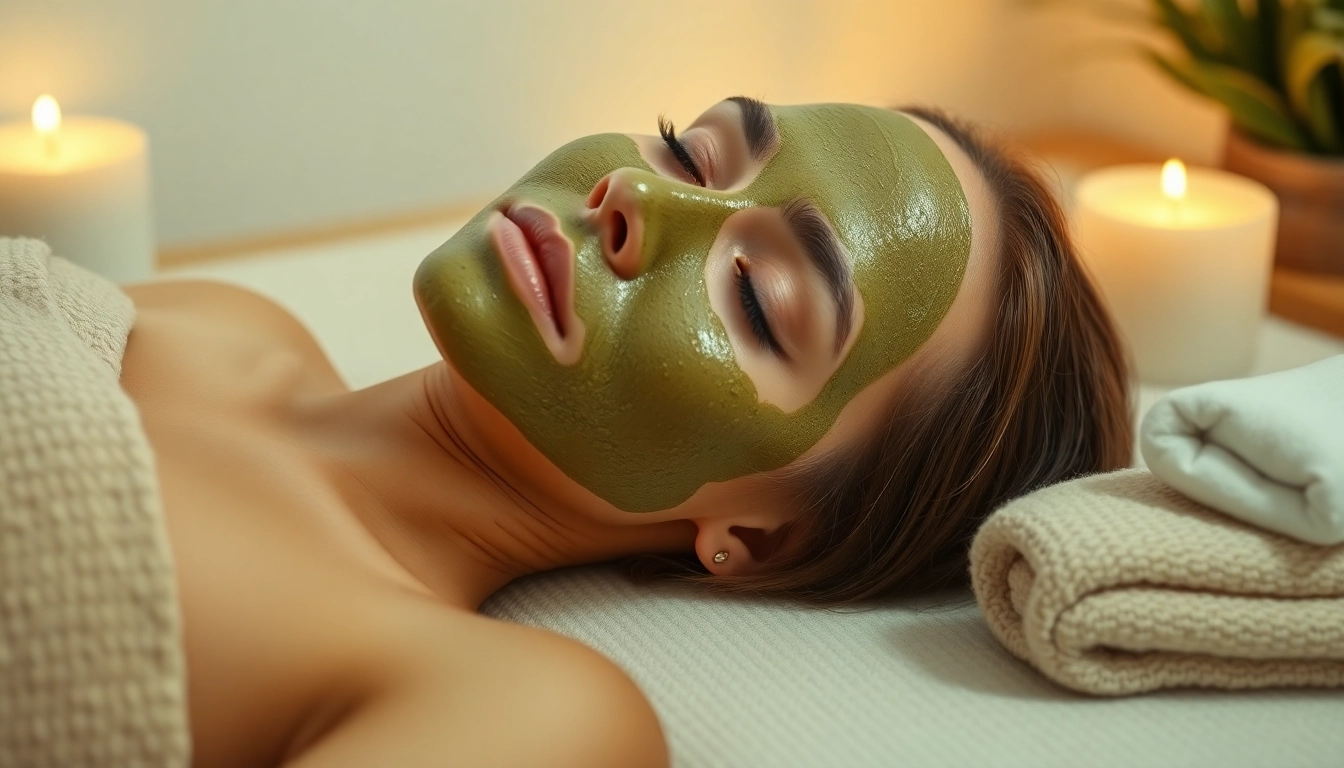Understanding the Benefits of Face Masks
What is a Face Mask and How Does It Work?
A face mask is a skincare product designed to deliver beneficial ingredients to the skin, enhancing its appearance and health. These masks come in various forms, including creams, gels, sheets, and clay. When applied, they work by delivering active ingredients that penetrate the epidermis, providing hydration, nourishment, and even treatment for specific skin concerns. The experience of using a face mask can also serve as a relaxing ritual, creating a moment of self-care in a hectic world. Many individuals incorporate them into their skincare routine, especially when looking to boost hydration or target particular issues. The science behind the efficacy of face masks lies in their formulation; through occlusion, they enhance absorption and create an environment conducive to treating skin issues. You can explore various options for effective facial treatments through our website, featuring a range of face mask products.
Key Ingredients to Look For
The effectiveness of face masks largely depends on their ingredients. When selecting a mask, pay attention to the following key components:
- Hyaluronic Acid: Known for its exceptional moisture-retaining properties, hyaluronic acid helps plump the skin and maintains optimal hydration levels.
- Vitamin C: An antioxidant that brightens the skin and combats oxidative stress, Vitamin C also helps in fading dark spots and improving overall skin tone.
- Retinol: A derivative of Vitamin A that is especially beneficial for aging skin, retinol promotes cell turnover and boosts collagen production.
- Clay: Ideal for oily skin, clay masks absorb excess oil and impurities, reducing the appearance of pores and preventing breakouts.
- Aloe Vera: This natural ingredient soothes inflamed skin and provides hydration, making it perfect for sensitive skin types.
Types of Face Masks for Different Skin Types
Understanding your skin type is crucial when choosing a face mask. Here’s a breakdown of masks suited for various skin types:
- Oily Skin: Clay masks are ideal for absorbing excess oil, unclogging pores, and reducing shine.
- Dry Skin: Cream or gel masks infused with hydrating agents like glycerin or hyaluronic acid help nourish and moisturize.
- Combination Skin: Look for multi-masking options, which combine different masks on various areas of the face—for example, a clay mask on the T-zone and a hydrating mask on the cheeks.
- Sensitive Skin: Opt for soothing masks that contain natural ingredients like chamomile or aloe vera to reduce irritation.
- Aging Skin: Masks rich in retinol or peptides can help combat signs of aging by boosting collagen and elastin production.
Choosing the Right Face Mask for Your Needs
Assessing Your Skin Concerns
Before you choose a face mask, it’s essential to assess your individual skin concerns. Do you struggle with dryness, uneven texture, or acne? Identifying your specific issues will guide your selection process:
- Dryness: Look for hydrating masks loaded with moisture-retaining ingredients.
- Acne: Opt for masks containing salicylic acid or tea tree oil, which can help mitigate breakouts.
- Hyperpigmentation: Vitamin C masks are great for evening out skin tone and fading dark spots.
- Puffy Eyes: Gel masks with cucumber or chamomile can help soothe and reduce puffiness around the eyes.
Comparing DIY vs. Store-Bought Face Masks
When it comes to face masks, a common dilemma is whether to go for DIY options or store-bought products. Both have their merits:
- DIY Masks: You can customize ingredients based on your preferences, and they often contain fewer preservatives. However, the effectiveness can vary significantly based on the quality of ingredients used and proper formulation.
- Store-Bought Masks: These typically offer a scientifically formulated blend of active ingredients designed for specific results. They’re often more convenient and can have a longer shelf life.
Ultimately, the choice will depend on personal preferences, time availability, and skin goals.
How to Test and Patch-Check Face Masks
Before fully committing to a new face mask, it’s wise to conduct a patch test, especially if you have sensitive skin. Here’s how to do it safely:
- Apply a small amount of the mask on a discreet area of your skin (like the inner wrist or behind the ear).
- Wait for 24 hours to see if any irritation occurs.
- If there’s no adverse reaction, feel free to apply it to your face as directed.
Application Tips for Maximum Effectiveness
Step-by-Step Guide to Applying a Face Mask
To get the most out of your face mask, follow these steps:
- Cleanse: Start with clean skin to remove dirt, makeup, and excess oil.
- Exfoliate: Lightly exfoliating beforehand can help improve mask absorption.
- Apply Evenly: Use your fingers or a brush to apply the mask evenly across the face, avoiding the eyes and mouth.
- Relax: Leave the mask on as directed while you unwind, typically between 10-20 minutes.
- Rinse: Gently rinse off with warm water, followed by a splash of cold water to close pores.
- Moisturize: Finish with a suitable moisturizer to lock in hydration.
Timing: How Long Should You Keep a Face Mask On?
The recommended time for leaving a face mask on can vary based on the product’s type and its active ingredients. Here are some general guidelines:
- Sheet Masks: Typically should be left on for 15-20 minutes.
- Clay Masks: Usually require 10-15 minutes, as they can dry out the skin if left on too long.
- Cream Masks: These often can stay on longer, around 20-30 minutes, depending on the formulation.
It’s crucial to follow the instructions specific to the mask you are using to achieve the best results without risking irritation.
Common Mistakes to Avoid When Using Face Masks
Even the best face masks can yield disappointing results if used incorrectly. Here are some common pitfalls to avoid:
- Not Cleansing Skin Properly: Always start with a clean face to maximize the mask’s effectiveness.
- Overusing Masks: Using masks too frequently can lead to irritation or dryness. Stick to the recommended frequency.
- Ignoring Patch Tests: Skipping patch tests can lead to unexpected reactions, especially with new products.
- Not Following Product Instructions: Each mask will have unique guidelines regarding application time and rinsing. Always adhere to these to avoid adverse effects.
Integrating Face Masks Into Your Skincare Regimen
How Often Should You Use a Face Mask?
The frequency of face mask use can depend on your skin type and concerns. Here are some general recommendations:
- Oily Skin: 1-2 times a week to manage oiliness and prevent breakouts.
- Dry Skin: 1-2 times a week, focusing on hydrating masks for added moisture.
- Combination Skin: Alternate between hydrating and purifying masks—generally 1-2 times weekly.
- Sensitive Skin: Once a week to avoid over-sensitization, with emphasis on calming ingredients.
Adjust according to how your skin responds, and consider consulting a skincare professional if uncertain.
Pairing Face Masks with Other Skincare Products
To maximize the benefits of your face mask, consider how it fits into your broader skincare routine:
- Serums: Apply serum after masking to boost hydration and provide additional skin benefits.
- Moisturizers: Always follow with a moisturizer to lock in the benefits gained from your mask.
- Sunscreen: In the morning, always apply sunscreen after your complete skincare routine, including using a mask the night before.
Consult product labels for compatibility to ensure your regimen is beneficial and not counterproductive.
Seasonal Changes: Adjusting Your Face Mask Use
Your skincare needs may fluctuate with the seasons, affecting how you use face masks:
- Winter: Focus on hydrating masks to combat dryness caused by cold air and indoor heating.
- Spring: Consider brightening masks to prepare for the upcoming sunny days.
- Summer: Opt for cooling and oil-absorbing masks to manage shine and refresh the skin.
- Autumn: This is an excellent time to start incorporating masks with anti-aging properties to counteract sun damage.
By customizing your face mask choices to align with environmental changes, you can maintain your skin’s health year-round.
Measuring the Results of Your Face Mask Routine
Signs of Improvement: What to Look For
As you incorporate face masks into your routine, recognize these signs of improvement:
- Increased Hydration: Skin feels more plump and has a healthy glow.
- Reduced Breakouts: A decrease in acne or fewer blemishes indicates effective treatment.
- Even Skin Tone: Diminished dark spots or pigmentation suggests successful use of brightening ingredients.
- Smoother Texture: Skin appears sleeker and less rough after consistent use of exfoliating masks.
Keeping a Skincare Journal: Tracking Your Progress
To maximize your results, maintaining a skincare journal can help track your progress and products used. Include the following:
- Date and time of application
- Type of mask used
- Skin condition before and after application
- Any reactions experienced
- Overall impressions and how your skin felt post-use
This record allows you to identify patterns in your skin’s response to different products and adjust your usage accordingly.
When to Consult a Dermatologist
If you experience persistent skin issues, it may be time to seek professional advice. See a dermatologist if you notice:
- Severe irritation from face masks.
- Worsening acne or skin conditions despite using different masks.
- Persistent dryness, redness, or other discomfort that doesn’t resolve.
- Serious skin concerns like eczema or rosacea.
A dermatologist can provide tailored advice and treatment options that align best with your specific skin needs.




